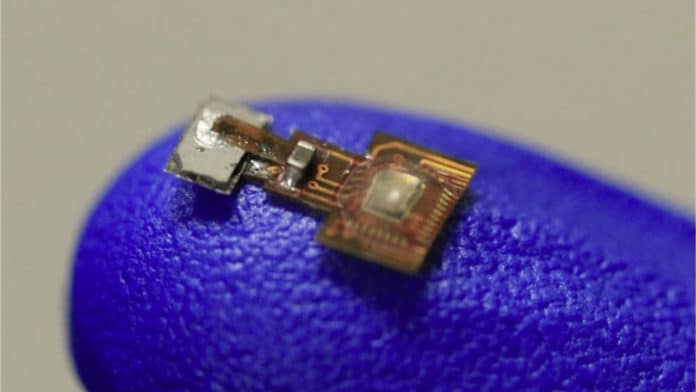Recently, Rice scientists have made a breakthrough, i.e., a neural implant that can be both programmed and charged remotely with a magnetic field. Dubbed as MagNI, the integrated microsystem may make possible embedded devices like a spinal cord-stimulating unit with a battery-powered magnetic transmitter on a wearable belt.
Consists of magnetoelectric transducers, the MagNI enables the chip to harvest power from an alternating magnetic field outside the body. According to scientists, it can be used to help patients with epilepsy or Parkinson’s disease.
Components of the prototype, such as a 2-by-4-millimeter magnetoelectric film that converts the magnetic field to an electric field, a CMOS chip, and a capacitor to temporarily store energy, are equipped on a flexible polyimide substrate.
Kaiyuan Yang, an assistant professor of electrical and computer engineering Rice’s Brown School of Engineering, said, “This is the first demonstration that you can use a magnetic field to power an implant and also program the implant. By integrating magnetoelectric transducers with CMOS (complementary metal-oxide-semiconductor) technologies, we provide a bioelectronic platform for many applications. CMOS is powerful, efficient, and cheap for sensing and signal processing tasks.”
“MagNI has clear advantages over current stimulation methods, including ultrasound, electromagnetic radiation, inductive coupling, and optical technologies. People have been demonstrating neural stimulators on this scale, and even smaller. The magnetoelectric effect we use has many benefits over mainstream methods for power and data transfer.”
“Tissues do not absorb magnetic fields as they do other types of signals, and will not heat tissues like electromagnetic and optical radiation or inductive coupling. Ultrasound doesn’t have the heating issue, but the waves are reflected at interfaces between different mediums, like hair and skin or bones and other muscle.”
“Because the magnetic field also transmits control signals, MagNI is also calibration-free and robust. It doesn’t require any internal voltage or timing reference.”
During the experiments, scientists soaked the prototype in a solution and tested it in air and jellylike agar. They found that the chip has long-term reliability. Scientists also validated the technology by exciting Hydra Vulgaris, a tiny octopuslike creature studied by Robinson’s lab.
By constraining hydra with the lab’s microfluidic devices, they were able to see fluorescent signals associated with contractions in the creatures triggered by contact with the chips. The team is currently performing in-vivo tests of the device on different models.
The paper on this subject will be available on the IEEE Xplore Digital Library.
